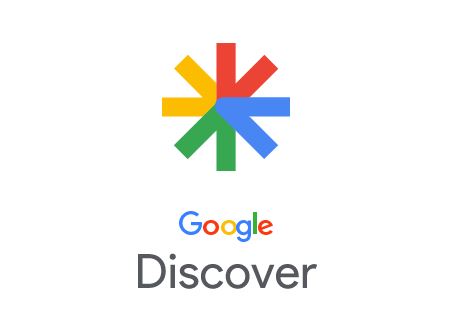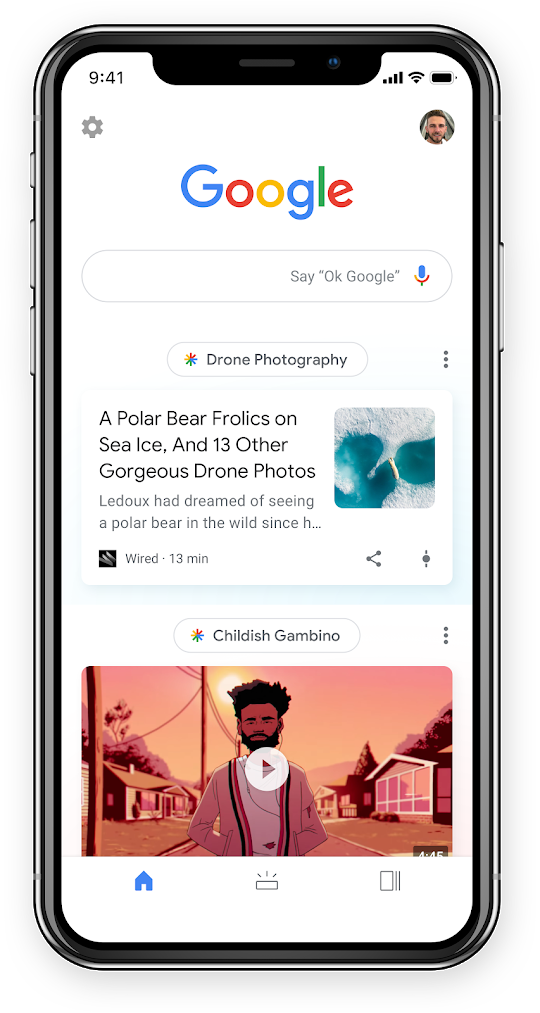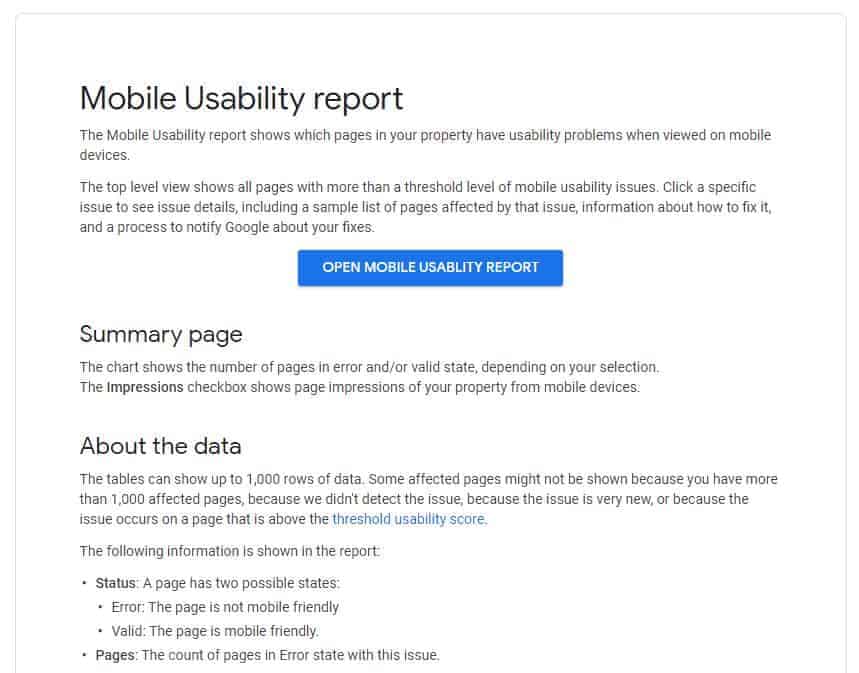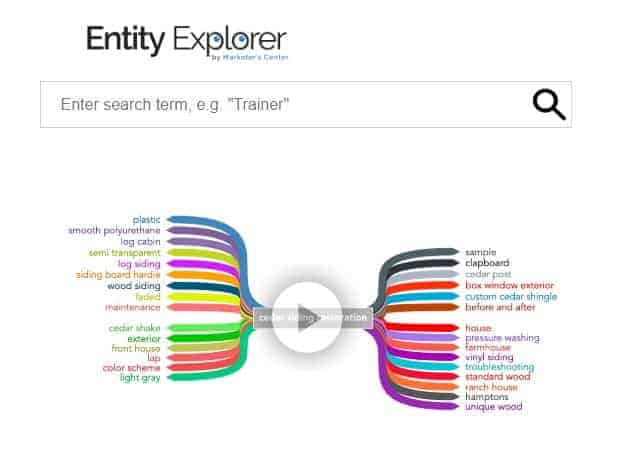
How To Optimize for Google Discover

As predictive algorithms and artificial intelligence become ever more sophisticated, search engines and web tools customize each individual experience based on the person’s previous search and browsing data. With Google Discover, for example, users receive content that matches their interests and needs before they even type a query in the search bar. This technology represents a rich opportunity for brands to access organic traffic when they buy SEO articles. For example, the SEO firm Wordlift found that 25% to 42% of its clients’ organic traffic originated from Google Discover. Learn how to optimize for Google Discover with smart tactics and increase the amount of fresh traffic you receive from organic searches and position your brand for expanded visibility.
SEO firm Wordlift found that 25% to 42% of its clients' organic traffic originated from Google Discover 👀. #GoogleDiscover #ContentMarketing Share on X
What Is Google Discover, Anyway?
Discover has actually been around since 2017, but it was originally called News Feed. Whatever the name, the concept is simple: The app continually delivers content of interest to the user, with refreshed topics that change depending on his or her recent online wanderings. This dynamic approach appeals to readers who want to find the information they need quickly and move on to the next notification. Google Discover content appears when the user accesses Google.com on a smartphone browser, within the Google app and as a separate feed on Android devices.

Google Discover is a puzzle piece in the company’s overarching mission to change and enhance the way users search over the next two decades.
How Does Google Discover Work?
Optimizing your company’s content for Google Discover doesn’t just start when you buy SEO articles. You’ll need a basic understanding of how Discover works to target each Google user.
According to the product announcement, two primary mechanisms are used to determine what content is displayed in Google Discover:
- The Knowledge Graph, which charts the evolution of the person’s searches
- The Google News AI, which offers a customized delivery of recent news
These engines customize the articles they show on the person’s feed based on his or her current location (where available), activity in the Google app, Chrome browser history and search history on Google. Most people end up with a healthy mix of stories about their interests, hobbies, and fandoms, from sports to music and beyond. In addition, Google Discover shows content from brands, retail stores, restaurants and other establishments where the individual frequently browses, visits or shops.
The user can also play a role in personalizing the content he or she receives on Discover. An easy-to-use “show more/show less” button at the bottom of each story serves as a simple thumbs-up or thumbs-down to a particular topic. Sometimes, Google will ask the user directly about desirable and undesirable discover content.
While most content that pops up on Discover is brand-new, the app does sometimes deliver older articles that closely reflect the user’s interests.
Learn How to Optimize for Google Discover
A high page ranking on Google’s search engine doesn’t necessarily mean a page will appear on Google Discover. Likewise, pages that appear on Google Discover don’t necessarily have a high SEO ranking. Brands that know how to optimize for Google Discover must curate and develop content specifically optimized for that platform. With this starter guide, you can begin experimenting with Discover to boost your site’s organic traffic.
Get Verified
The first step in learning how to optimize for Google Discover is getting verified. Not every website qualifies for inclusion on Discover. Your brand must adhere to the Google News content standards. Google Search Console must verify and index the content on your website. In addition, you need to establish a Google My Business account. Once you set up that account, you can create an entity for your company within Google Knowledge Graph. You can also create separate entities about product lines and other pillars of your brand identity, such as your CEO.
Know What the Numbers Mean
According to Search Engine Journal, Google Discover delivers an 11% click-through rate across all URLs and a 6% click-through rate for non-news articles. However, it’s important to note that Google measures impressions differently for Discover than it does for a standard search. For Discover, the dashboard records an impression when the users scrolls the page into view. For search, the user must actually click on the URL.
Always Add an Image
When scrolling through Discover, users are drawn to content with engaging, high-quality images. Every piece you publish should carry an eye-catching photo or illustration with a thumbnail that will look attractive in the feed. Images for Discover should be at least 1,200 pixels wide. Google reported that Discover cards with large images experienced 5% higher click-through rates. In addition, users noted 3% higher satisfaction and stayed 3% longer on these stories.

Make sure your image also features:
- A caption that describes what the image is about
- Alt text that describes the image to improve accessibility
- A file name that provides an appropriate description of the image
- Lossless compression that helps the image load quickly despite its large size
Build Out Robust Product Pages
In a recent analysis of Google Discover traffic, Search Engine Journal found that clicks on product detail and category pages represented 49% of e-commerce traffic from the app. Using descriptive meta data, content and keywords on these pages is a smart strategy to get more new visitors to click on your catalog, not to mention more potential conversions. You can buy SEO articles in batches from SEO article writing firms that specialize in product and category pages.
Tailor Content to Small Screens
One of the most crucial ways to know how to optimize for Google Discover is by having a mobile friendly website. Google Discover is a purely mobile platform, so your content will appear only if it is optimized for tablets and smartphones. If your site is not already accessible on a small screen, follow these best practices:
- Have a responsive or separate mobile website.
- Limit pop-ups and ads on your site.
- Use accessible images that mobile devices can open.
- Ensure your content loads quickly.
When in doubt, check out the Mobile Usability report on Google Console to detect red flags that could be compromising the performance of your pages. In general, a page that takes longer than 10 seconds to load or has too many ads will not appear on Google Discover. The Google Search Console lets you compare the ranking of pages that are optimized for mobile against pages that aren’t.

Target and Tag Based on Entity
Google uses the concept of “entities” to deliver content to Discover users. With the Entity Explorer tool, you can type in your niche and receive a list of related entities that connect your existing or planned SEO article writing assets to your potential audience on Discover. The platform uses these entities for semantic organization, which means that every page on Discover intrinsically links to other pages on similar topics. By tagging your posts with the entities that appear in Entity Explorer, you increase the ability of the Discover algorithm to select your content for its users who are interested in those entities.

For example, let’s say you have a travel agency that specializes in planning national park tours. When you enter “national park tours” in Entity Explorer, you’ll be able to instruct your article writing services to focus on appropriate keywords, such as park highway, Bryce Canyon, South Rim Village, Rising Sun Campground and Canada hotel.
Spotlight Current Events
While evergreen content is a staple of your traditional content marketing strategy, brands that want to succeed on Discover should emphasize time-sensitive fare for readers. Returning to the example above, your travel agency could buy SEO articles about various park events for National Trails Day in June, interpretive programming in Yellowstone National Park in July, and Ranger Living History programs in August.
When you buy articles from an SEO article writing firm, try these others strategies to keep your content current for Google Discover:
- Write essays and thought leadership about relevant trends and topics in your niche.
- Refresh and update evergreen content to provide new and accurate information.
- Comment on current events relevant to your industry with a fresh spin on the news.
Remember to E-A-T
The richer and more detailed your content, the better it will perform in the intensely personalized Discover platform. Google prioritizes content that meets the E-A-T algorithm, which stands for Expertise, Authority and Trustworthiness. Whether you buy SEO articles from article writing services or have an in-house writer who is responsible for your content, E-A-T should always be top of mind. Google’s Search Quality Rating Guidelines defines these terms as follows:
- Expertise applies to “everyday” proficiency in areas like cooking, gardening and fashion. It also refers to professional expertise in fields such as finance, medicine and law.
- Authority describes the reputation and credentials of your brand. Consistent and clear branding, backlinks from well-known experts, and citations to reputable sources all increase the authority of your site’s content. When you buy SEO articles, stress the importance of adding references for facts and statistics.
- Trustworthiness measures the accessibility and accuracy of your content. To meet Google’s guidelines for trustworthiness, ensure that your brand’s website has a prominent privacy policy, clear product pricing, intuitive navigation and secure payment.
In addition to improving aspects of your site that contribute to your E-A-T ratings, you should also remove elements that cause Google’s reviewers to flag your site. These include limited information about the individual or business who created the site, unsafe images, distracting ads, headlines that sound like clickbait or spam, and content that offers little value to readers.
Tell Your Audience About Google Discover
Google users can guide their own Discover journeys by following entities just as they would on a social media feed. SEM Rush recommends asking your existing readers to add you on Google Discover. When you write or buy SEO articles, add a call-to-action about Google Discover and encourage your visitors to select your site as a trusted source of information on the platform.
Try it yourself to see how easy it is to add an interest on Google Discover. Enter the name of your brand in Google’s search bar on your smartphone or device. Under the company or website name in the search results, you should see a small gray “Follow” button with a plus sign. Once you click the button, articles you publish will automatically appear in your Google Discover feed. Confirm that you followed successfully by checking that the plus sign has transformed to a check mark.
When users follow you on Discover, Google recognizes your site as a trustworthy and relevant source of information. The more readers who express interest in your site, the more likely that your content will show up for users who haven’t yet discovered (pun intended) your brand.

The performance of an article on social media also influences its performance on Discover. To succeed on Google Discover, make sure you have a clear social strategy established before you buy SEO articles from article writing services. Share your stories far and wide so that your audience can engage with the content and make it more popular on Discover.
Buy SEO Articles for Google Discover
Now that you know how to optimize for Google Discover, it’s time to get content. As an SEO article writing agency, BKA Content has the necessary experience to create new content or to refresh your existing content for Google Discover. If you’re ready to buy SEO articles, get in touch with our team to learn how we can support your content marketing strategy across the web search giant’s platforms and beyond.
- How To Use Keywords in Your Content for SEO - September 20, 2024
- Creating Google-Friendly Content - December 31, 2023
- Which Type of Content Brings In the Most Traffic? - December 28, 2023

